Subjective Mapmaking
In September 2017, The Design School at Kingston School of Art relocated to Spitalfields Market for three days. Exploring opportunities in the form of materials, resources, needs, stories and community collaborators, the brief was to bring craft and production to life before the eyes of passers-by, generating valuable ‘produce’ for the market and communities.
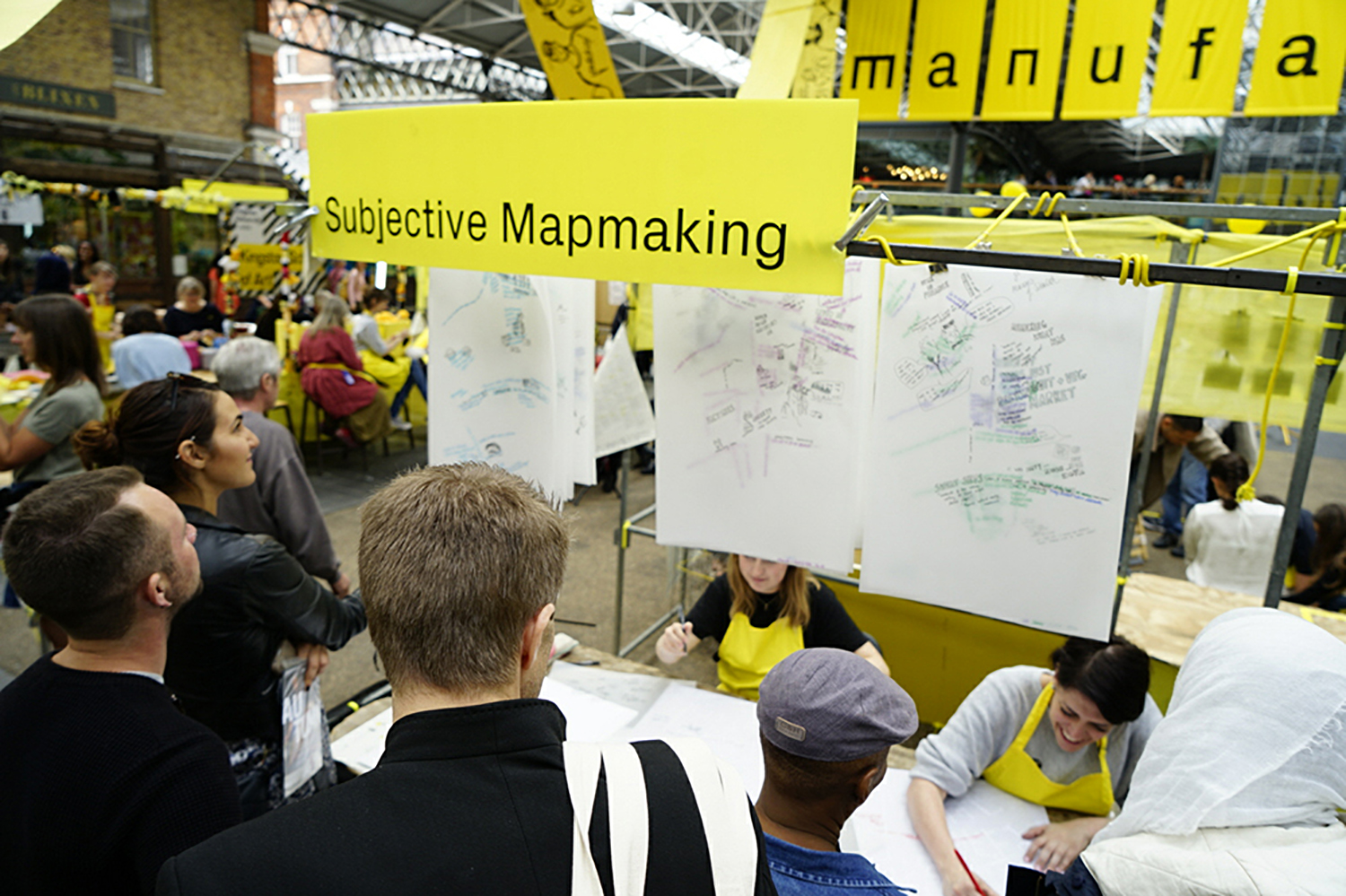
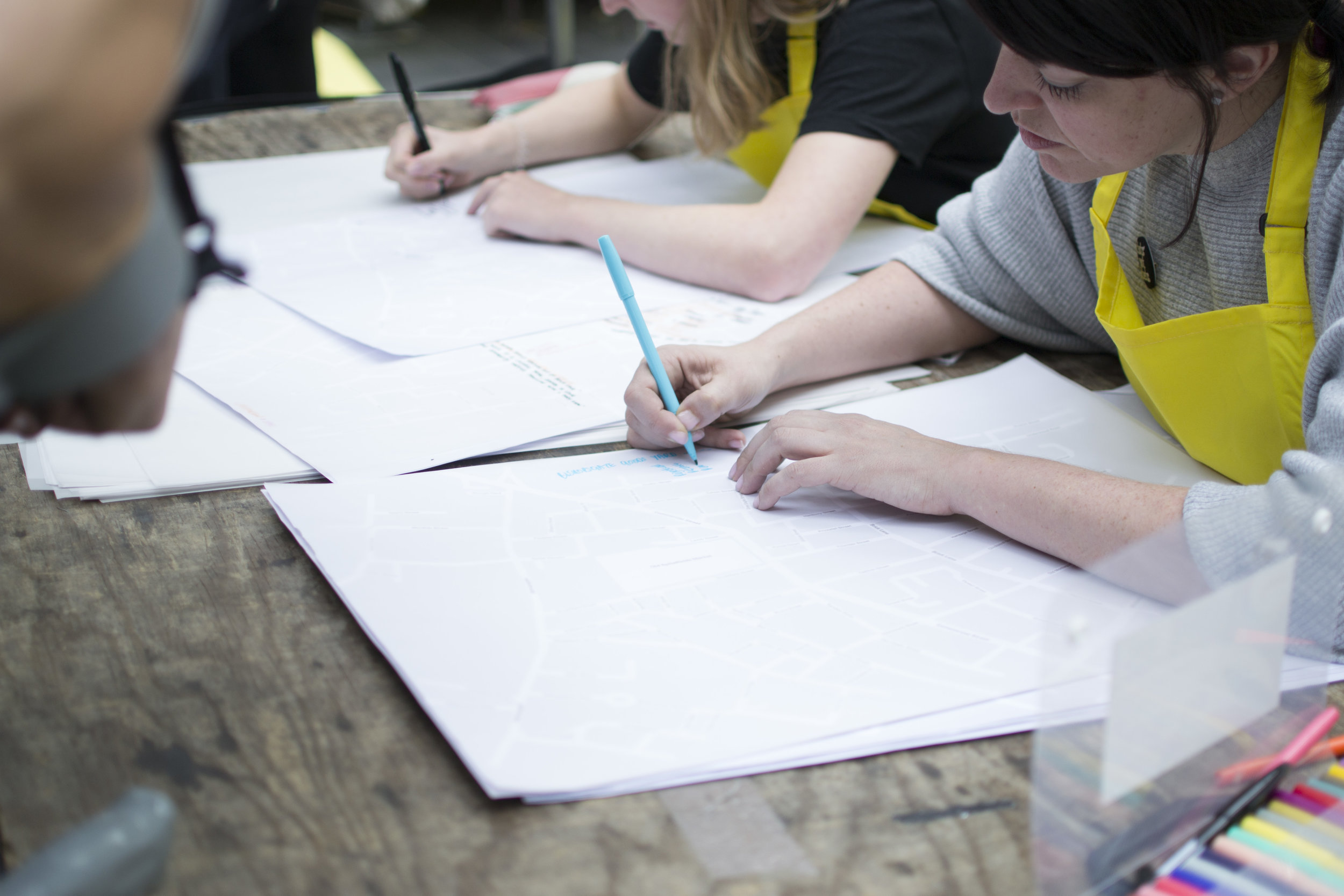
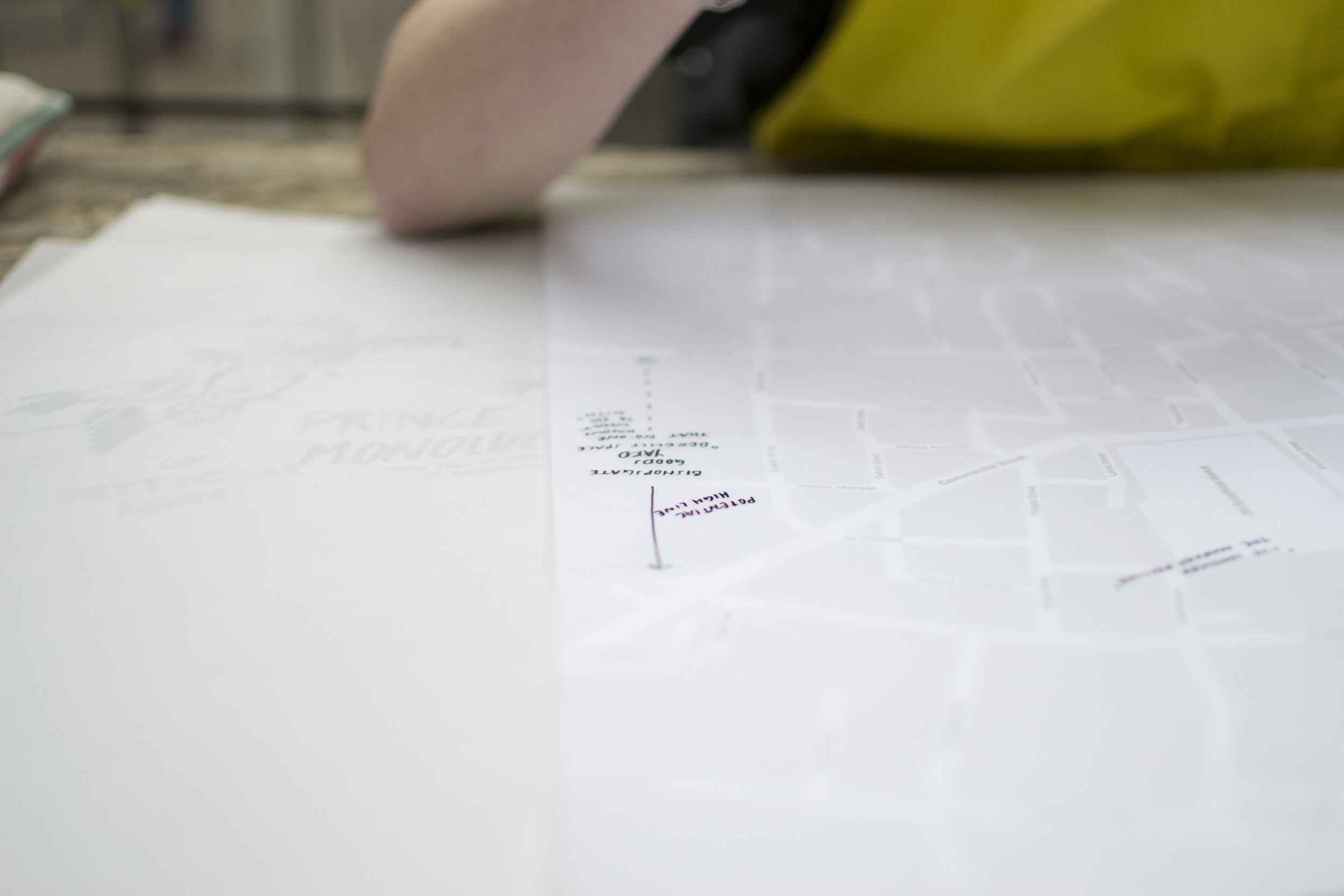
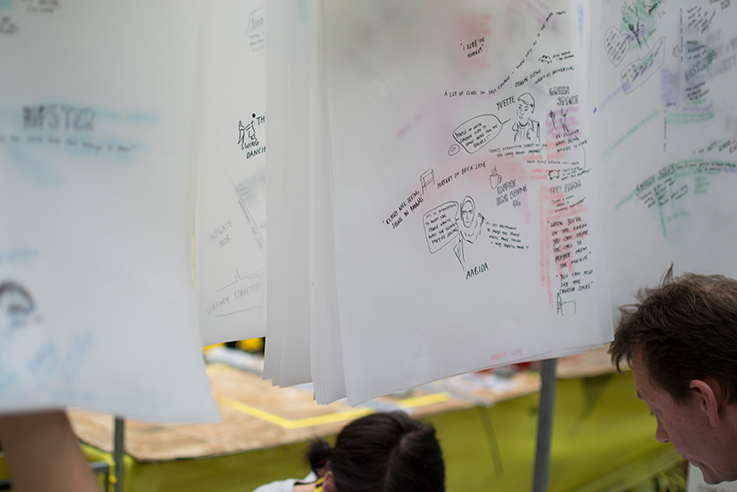
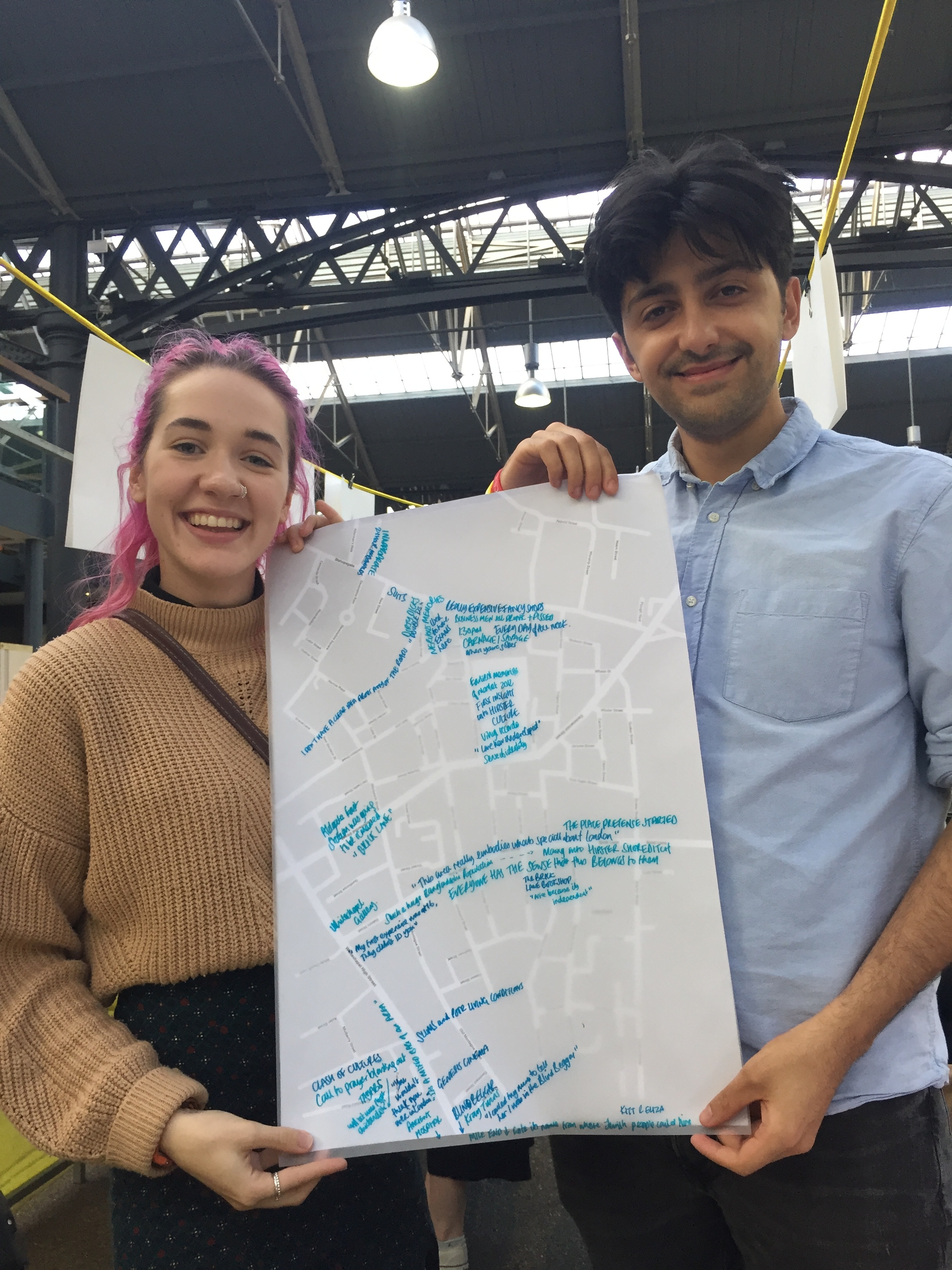
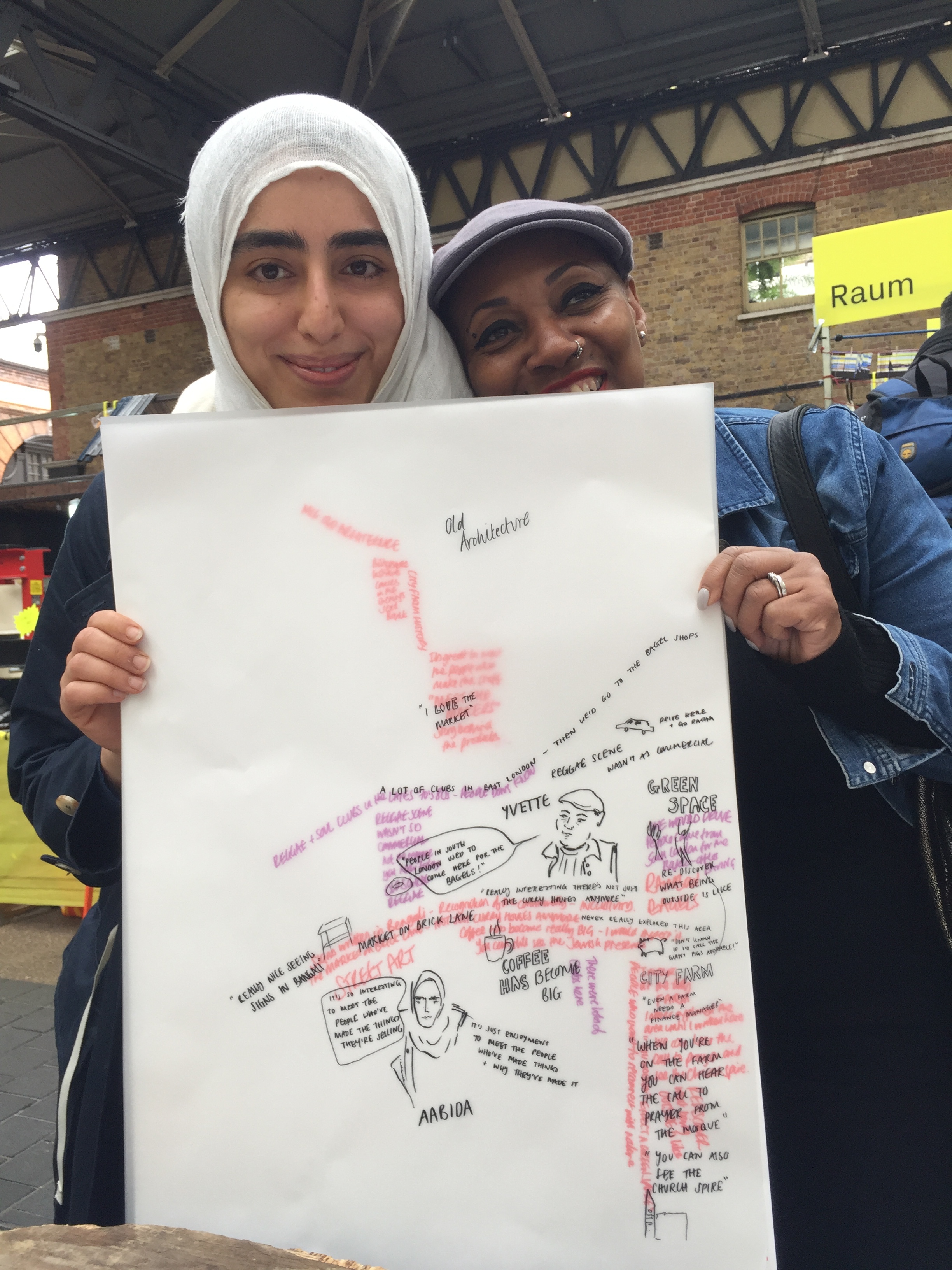

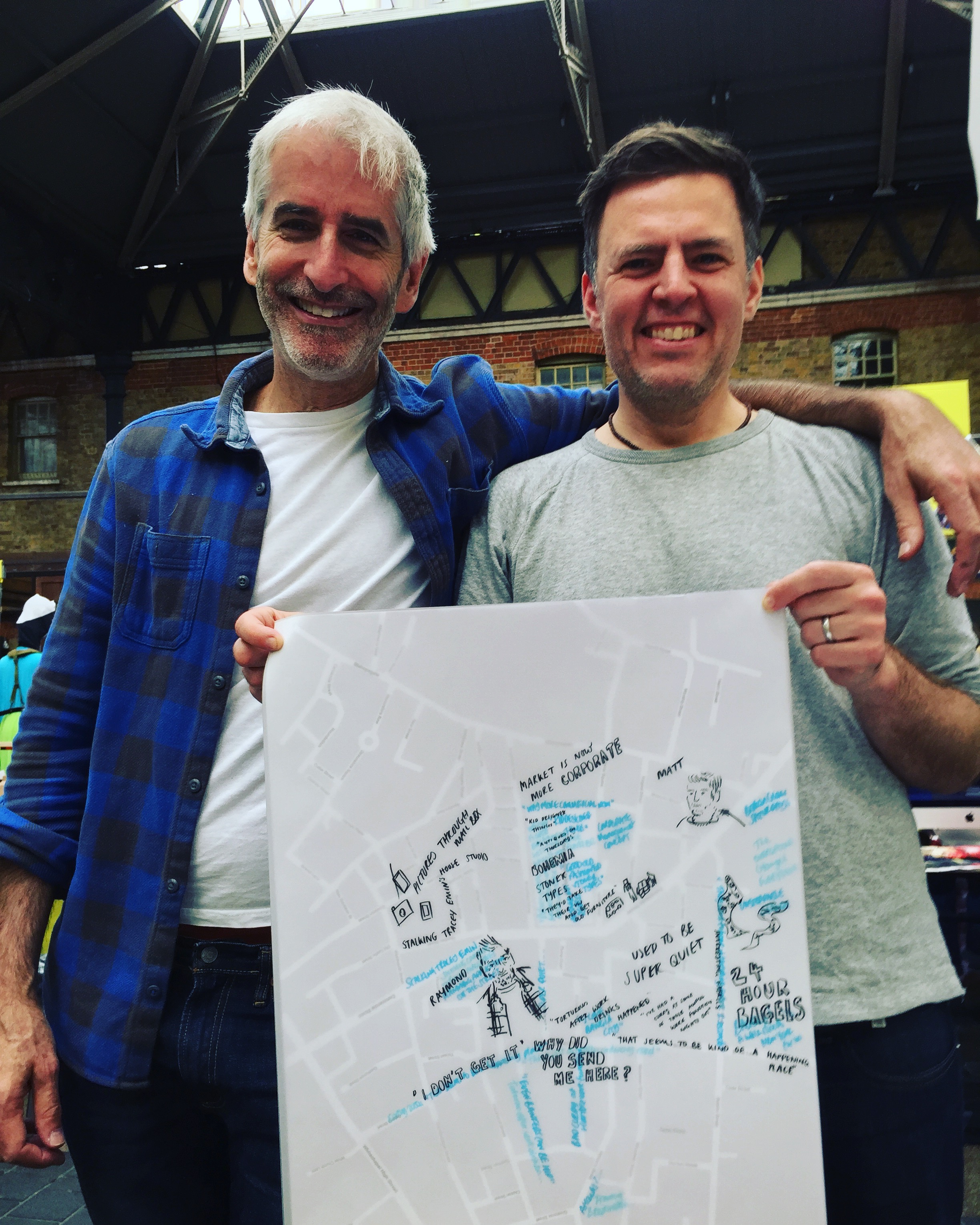
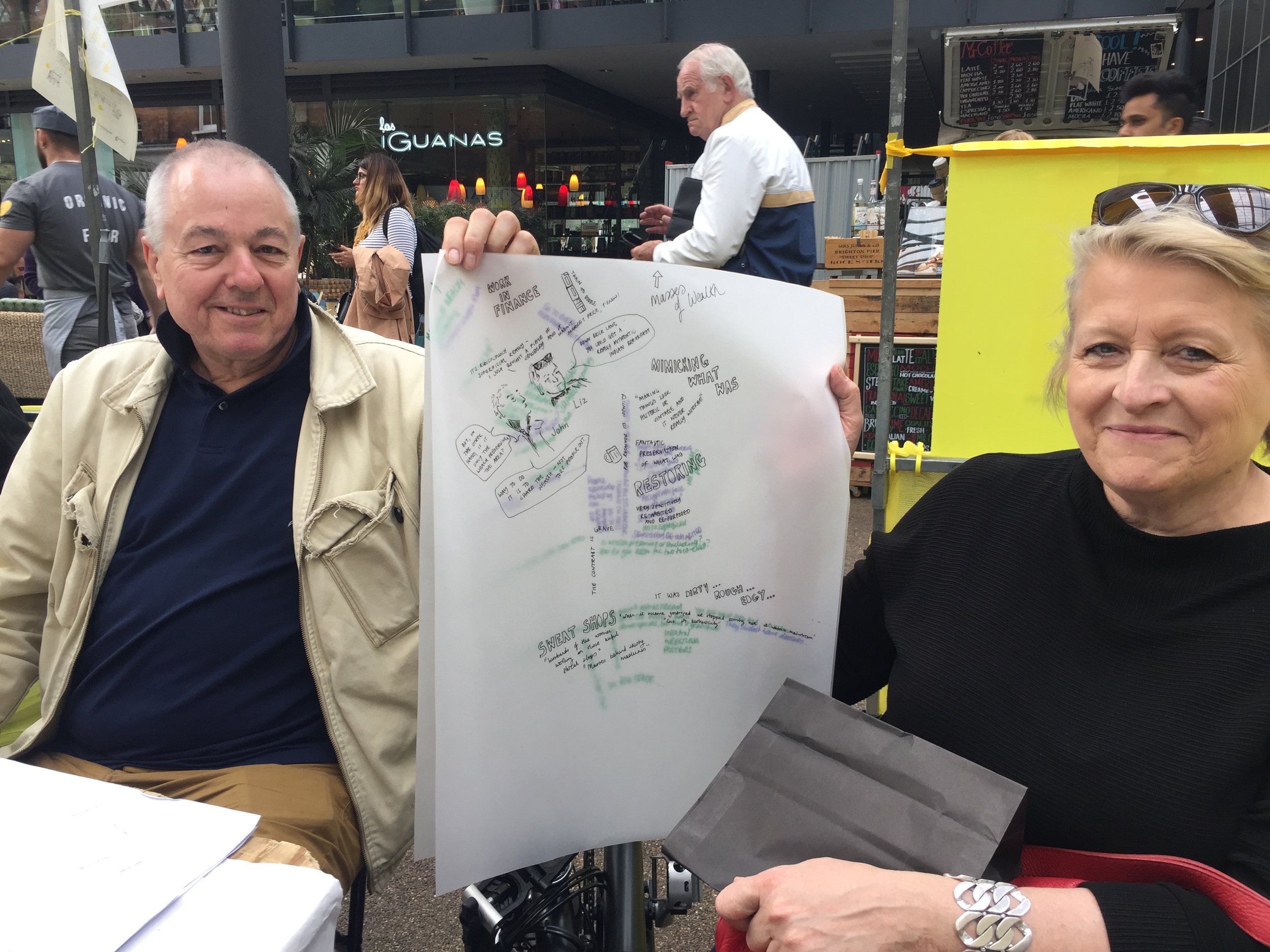
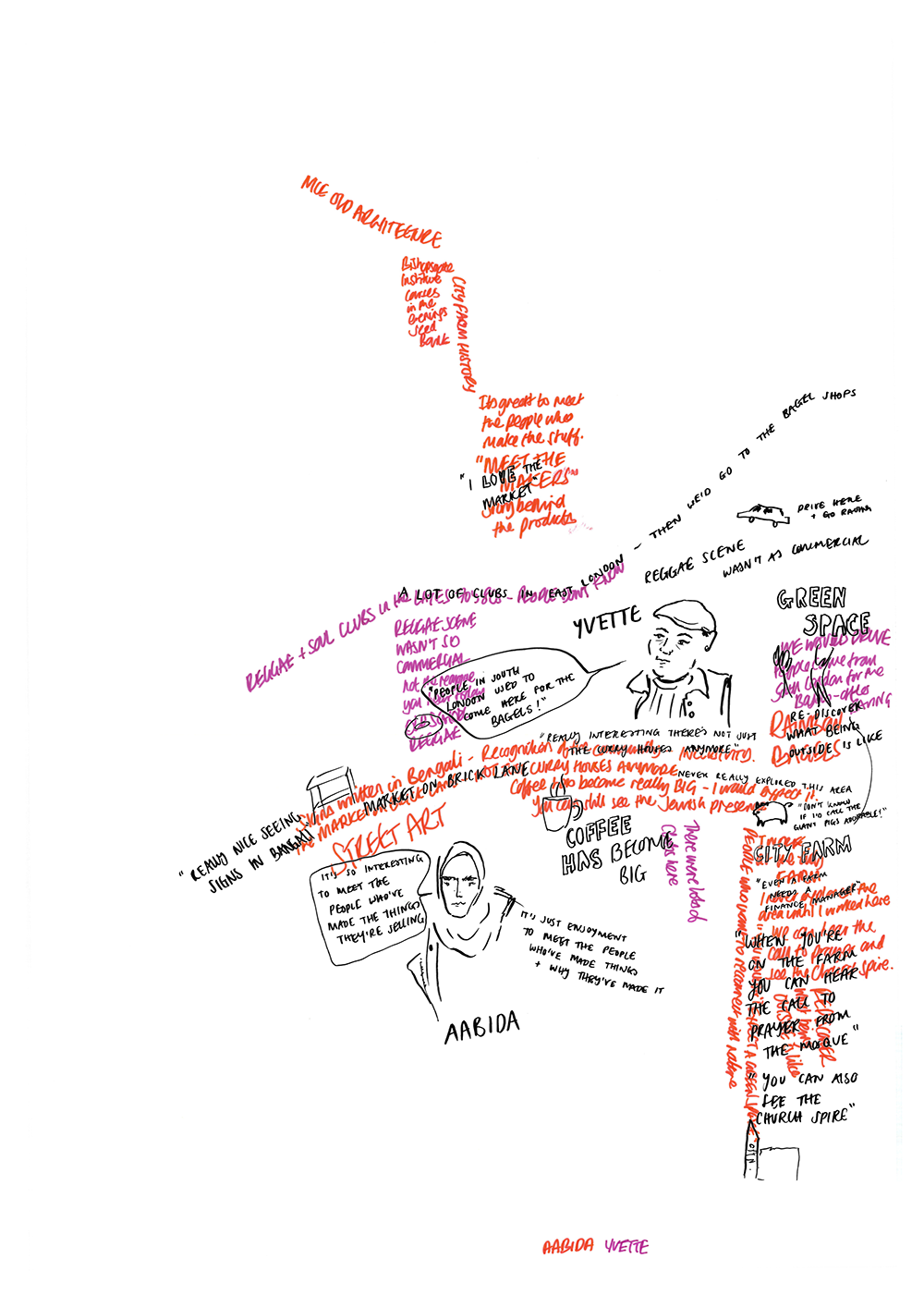
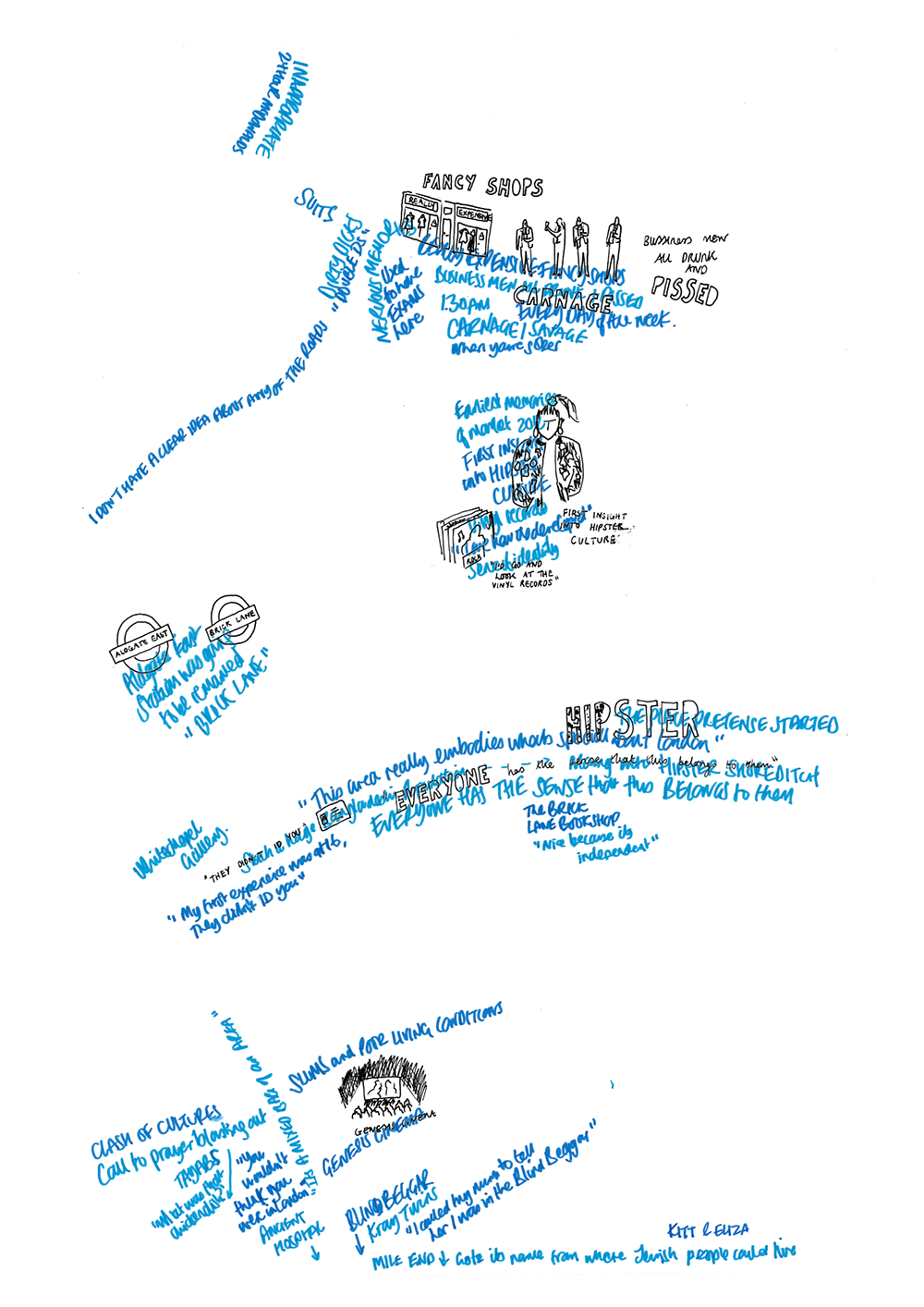
For over 350 years, Spitalfields Market, as a space and place, has served many different functions. From a wholesale food market to hipster fashion and food destination, I was interested to explore the production of the space, over time.
For three days in September, I collaborated with illustrator Hannah McNally to explore what can maps reveal. Using semi-structured interviews and diagrammatic elicitation with local people, often in pairs, we turned a stack of tracing paper and a large tub of coloured pens into a series of visual conversations that explored personal experiences of space, history and community in and around Spitalfields.
At this point in history, data and its connection to place is an extremely powerful form of evidence. In the age of the blue dot, that which cannot be collected and recorded as data has almost ceased to exist in the minds of many. Place in London is increasingly commodified and shaped by unseen agendas. Place and power can often insidiously align, the latter frequently eclipsing the former. Place is never simple or straightforward. Places have multiple narratives and meanings, existing all at once, contradicting one another, displacing one another almost continuously.
“There is thus no authentic space, only spaces produced in accordance with certain schemas developed by some particular group within the general framework of a society”
Over three days in Spitalfields we built up multiple layers of data about Spitalfields and the surrounding area. The visual maps represented quick and dirty negotiations of meaning between participant and designer. Hung above us to be viewed by passers by, they provoked conversation, reflection and often heated debate. They also offered those passing by the opportunity view the area from other perspectives and points in history. A different lens on a familiar place. A snapshot of alternative narratives, realities and histories hidden or erased, in the continuous production (and reproduction) of Spitalfields as a ‘place.’
CitE this:
McNally, H., and K, Laura., (2017) Subjective Mapmaking: Visual Interviews in Spitalfields. In: London Design Festival, 21-23 September 2017, Spitalfileds Market. Available at: https://ualresearchonline.arts.ac.uk/id/eprint/15776/
